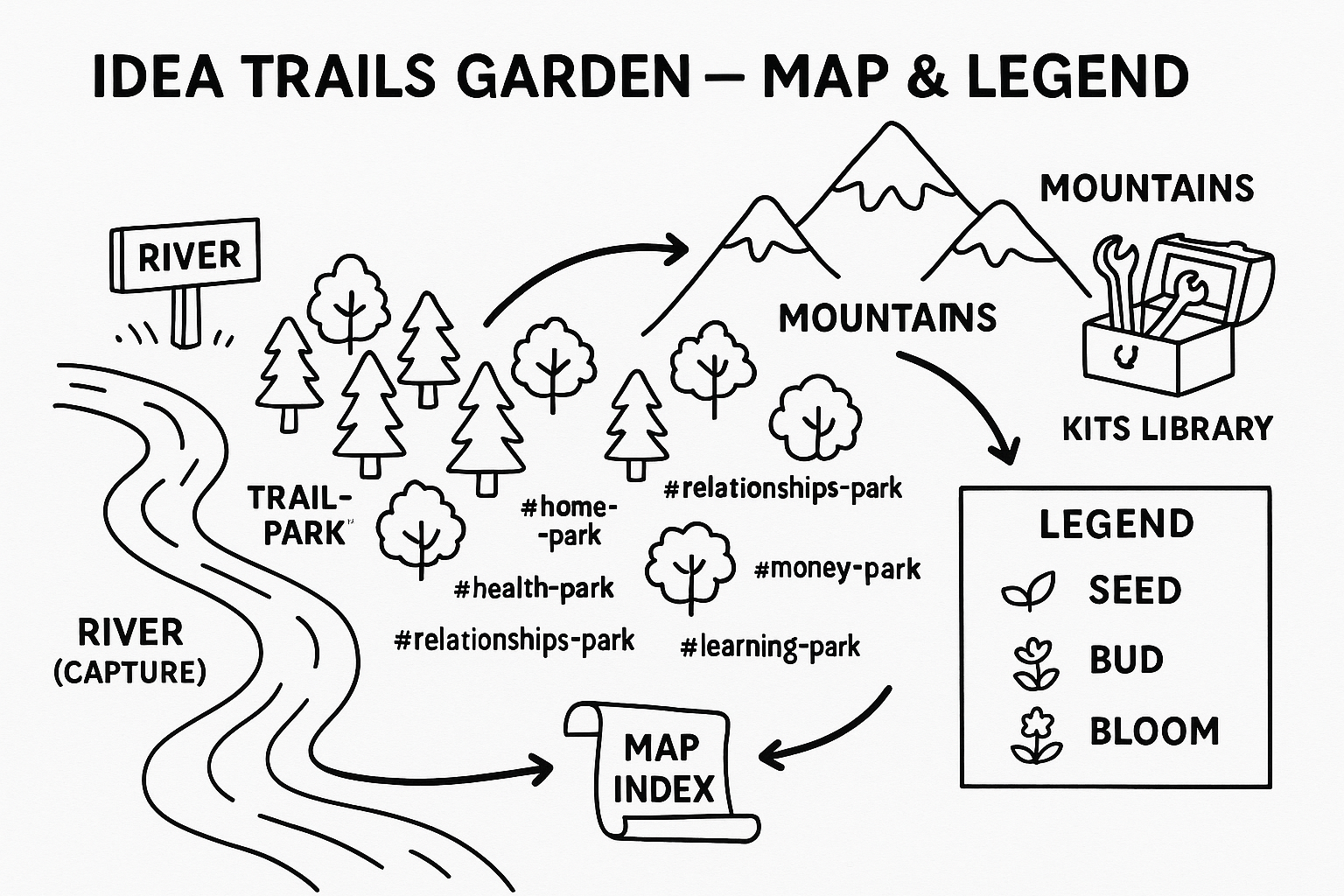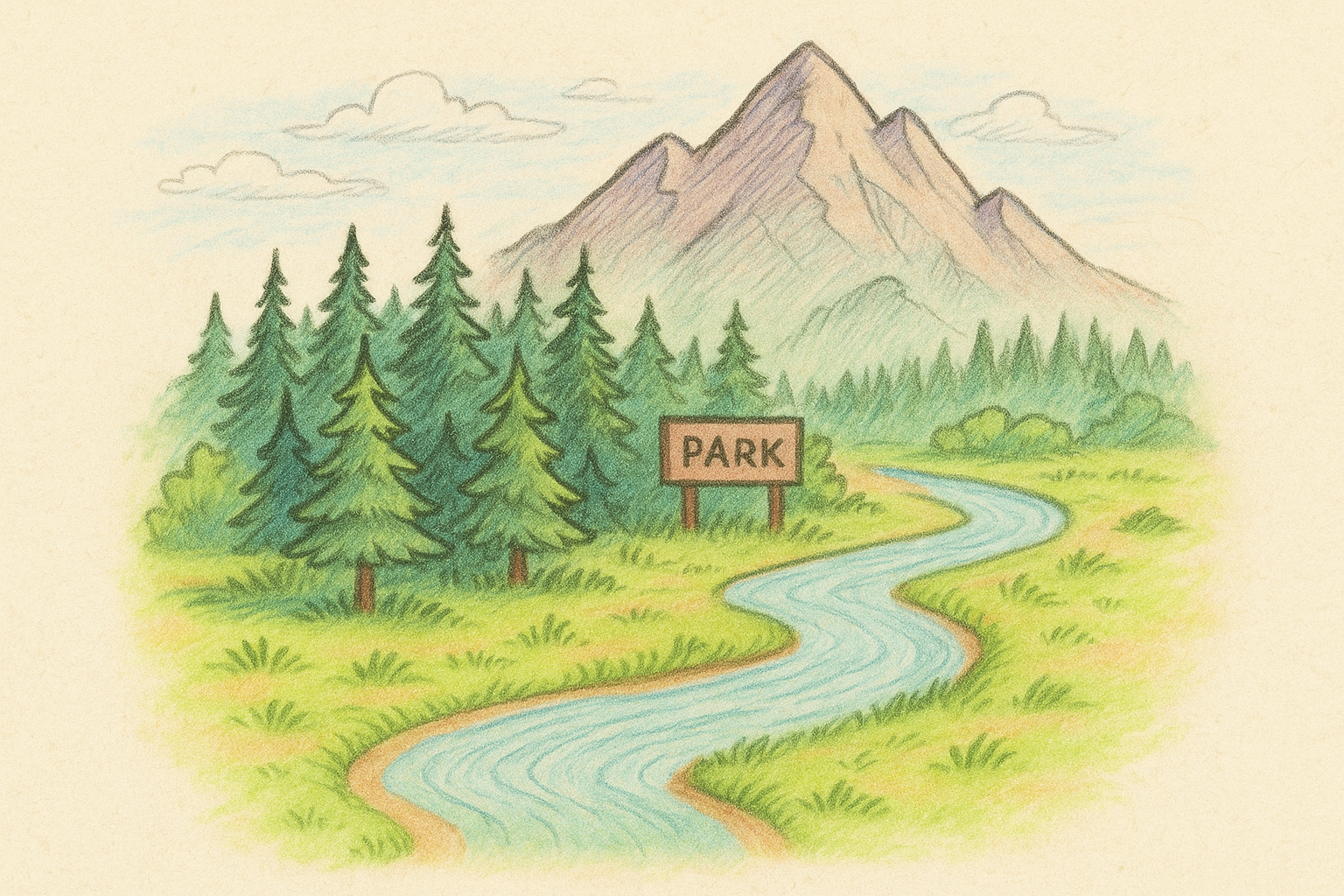RPM Trail Mapping System
R2 – Added trailheads and kits
2025-09-21
- Trailheads
A tiny capture layer that lives between River and Parks. One sentence, one link, one question. Purpose is routing. You promote a trailhead into the right Park Path later instead of letting River fragments pile up. - Kits
A cross-park library of reusable artifacts that fall out of Mountains. Checklists, templates, rubrics, prompts. Purpose is reuse. Kits reference the Mountain they came from and can be linked inside any Park.

R1 "RFM (Rivers, Forests, Mountains)"
2025-08-22

I'm a huge fan of systems thinking and it's often what helps me navigate new topics or define a sustainable practice – in this case, journaling and digital gardening. Recently, I was thinking through how I could make journaling more organic and help define the threshold between "quick notes" and "evergreen notes."
When it comes to digital gardening, of course, the goal is to keep it non-performative. For me though, that often meant I was either left with hundreds of scraps that I couldn't do much with or that I avoided writing anything down altogether because I was too concerned with it being scrappy.
Applying some of the simple labels below helped me understand where an idea found me and measure the velocity or urgency of it's growth. I could go on talking about ideas and how to Protecting the Ugly Baby, but essentially providing 3 layers of maturity helped me to know what mindset I was in when I first took the note and understand its potential.
🌊 River → 🌲 Forest (Parks) → ⛰ Mountains
- River = raw flow (stream of consciousness, markers). Most gets left behind.
- Forest = active workshopping zone. Divided into parks based on your domains (work, health, home, relationships, content, money, career, learning). Each park contains the threads, experiments, and patterns you’re exploring in that area.
- Mountains = principles that rise above domains — truths that cut across multiple parks.
How Parks Work
- Each Park is basically a collection of related Paths (clusters of markers).
- Parks don’t need to be balanced — some will be dense, some nearly empty, depending on your season of life.
- The purpose of a Park is to let you explore within a domain without confusing it with others.
Examples:
- Work Park
- Path: “Bullet-first drafting”
- Path: “Slack-first triage”
- Path: “Define non-goals at kickoff”
- Health Park
- Path: “Hydration improves energy more than caffeine”
- Path: “Strength training reduces anxiety”
- Home Park
- Path: “Finish small repairs immediately vs. batching”
- Path: “Use Sunday reset to reduce weekday friction”
Each of these paths lives in a forest “park” instead of being scattered everywhere.
Promotion Flow With Parks
- River (raw markers): “Felt anxious until I cleared Slack first.”
- Work Park (forest): That marker joins others → Path: “Slack-first triage reduces overload.”
- Mountain (principle): Over time, connects to other domains (e.g., clearing ambiguity in health, relationships) → “Reduce ambiguity before adding action.”
Benefits of Parks
- Keeps the forest navigable. Instead of dozens of random paths, you have clusters by life area.
- Lets you compare within a park (“what patterns are showing up in health?”) and across parks (“does this insight hold in more than one area?”).
- Makes it easier to prune: if a park is overgrown with abandoned ideas, you know that’s a domain where you’ve been testing a lot but not finding principles yet.